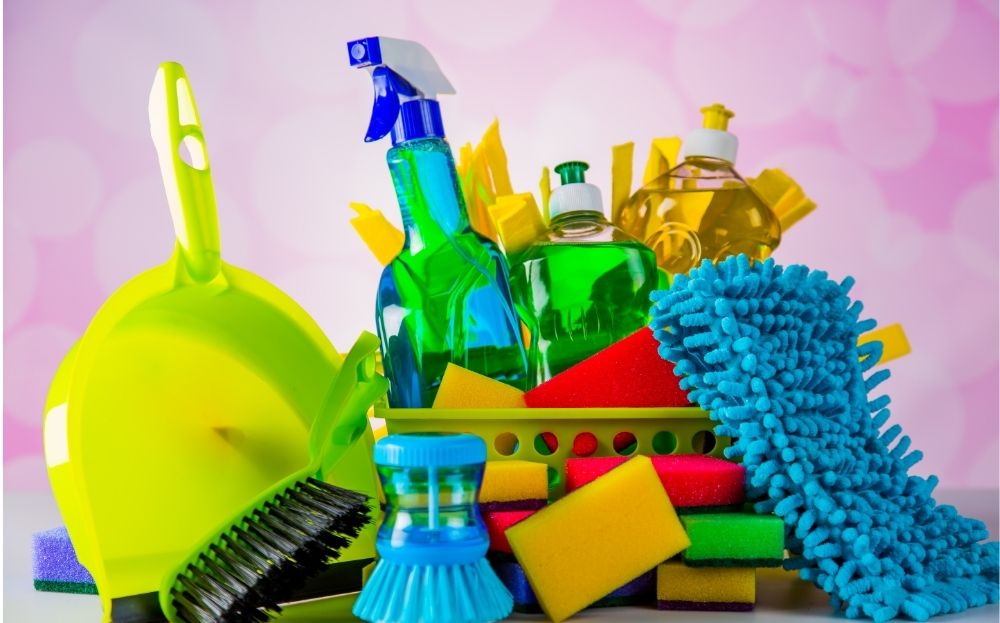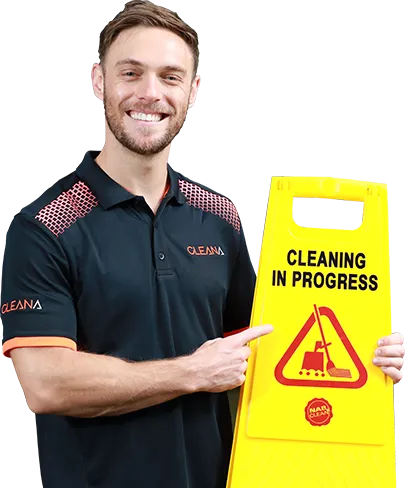There’s no denying that we live in a world where plastic has become a corner of our civilization, with the material being used to make furniture and other household items. And while this can make things less fragile, it can still come with its setbacks.
For example, plastic can be dangerous for the environment and is also prone to damage such as scratches and marks.
In fact, plastic windows, headlights, and chairs are just as susceptible to damage as a result of natural wear and tear.
However, this does not mean that you have to throw your plastic items away, as there are countless methods that can be used to polish plastic and remove scratches. So, if you want to know how you can do this, then you have come to the right place.
In the following article, we, CLEANA commercial cleaning services company are going to teach you how to polish plastic using a tried and true method, while also explaining everything you will need to get the job done. We have also included detailed instructions and a straightforward guide.
So, if you are ready to make your plastic items shine, this article has everything you need to get started…
What You Will Need

Before we can teach you how to polish plastic, you must first understand the different tools and materials you will need to complete the task.
In the section below, we have outlined everything you will need to restore your plastic items so that you can begin your preparation for the polishing process:
- Polishing compound (plastic or metal)
- Cotton balls
- Baking soda
- Old clothes (or towels)
- Rubbing alcohol
- Dish soap
- Sandpaper
- Toothpaste
Now that you know everything you will need, let’s take a look at how you can use these products to polish your plastic items…
Step One: Examine The Scratches
Before you can start the polishing process, you will need to examine your plastic to determine the severity of the scratches. Fortunately, this can be easily done by running a fingernail over the scratch to measure its depth, which should reveal the materials you will need to remove it.
For example, if your fingernail doesn’t catch on the scratch, then this means it is shallow enough to be treated with light abrasives such as toothpaste and baking soda.
However, if your nail does catch on the scratch, then this means it will need to be polished using more sufficient methods such as a series of passes with wet sandpaper.
Step Two: Wipe Down The Plastic
To begin the polishing process, you will need to clean the plastic surface thoroughly to remove any unwanted debris, as this could further scratch the plastic and render it unusable.
To do this, you will need to combine warm water with a few drops of mild dish soap before taking a cloth and rubbing it down the surface.
Alternatively, it is also possible to use rubbing alcohol instead of soap, although you will only need a small amount to get the job done.
Once the plastic has been thoroughly cleaned, you can move on to the next step if dealing with minor scratches or skip to step four if you want to remove a deep gouge.
Step Three: Buff With Mild Abrasives
When it comes to minor scratches, it is possible to treat them using common household toothpaste, as the substance contains silica, which can be used as a mild abrasive.
During this process, you will need to apply a small amount of toothpaste on the surface, so that it completely covers the scratch.
Once you have done this, you can take a clean cloth or cotton ball and use it to buff the plastic using strong circular motions.
Continue to do this until the surface of the plastic has evened out and rinse off the residual toothpaste with water before examining your work.
If the scratch is still visible, you will need to keep applying toothpaste and buffing until you have achieved your desired result.
In most cases, the buffing process could take up to ten minutes to complete, so you will need a lot of elbow grease to get the job done.
However, if you do not wish to use toothpaste, you can make your own buffing paste by combining water with baking soda. When the paste has been made, you will need to apply it to the scratch and use a clean cloth to buff the plastic using slow circular motions.
If neither of these methods works, then chances are the scratch is deeper than you first thought, which means you will need to use the next step to combat the problem.
Step Four: Wet The Sandpaper
If you are hoping to remove a deep scratch or gouge, you will need to use a method called wet sanding, which allows you to level the surface of the plastic with more force.
During this process, the moisture in the sandpaper helps to keep the material from building up, which helps to reduce the chances of scratching and further damage.
To begin this method, you will need to take a piece of 800-grit wet/dry sandpaper and soak it in a container of water for several minutes.
When the sandpaper has been thoroughly saturated, you can use it to make gentle circular motions against the affected surface.
While doing this, it is important that you do not apply too much pressure, as this could introduce new scratches and render the plastic irreparable. Make sure to rinse the surface between passes and re-wet the sandpaper when needed throughout the process.
Step Five: Use A Finer Sandpaper
If you can still see traces of the scratch, then you may need to clean the area again and repeat the process using 1000-grit sandpaper.
For the best results, it is recommended that you use progressively finer sandpaper (up to around 2000) until the scratch has been completely removed.
Once the scratch has been smoothed out, clean the surface again with a damp cloth to remove the debris.
Step Six: Polish The Plastic
When the scratch has been removed and the surface has been cleaned, you may notice that the plastic has lost its shine, which can make it look unattractive and unappealing.
To make sure your plastic sparkles, we recommend taking a small amount of polishing compound (plastic or metal) and applying it to the treated area.
Once the product has been introduced, you can take a clean cloth or cotton ball and use it to polish the dullness using slow circular motions.
For the best results, you may need to repeat the process several times before achieving your desired appearance.
Final Thoughts
While scratched plastic can make a home look unattractive, there are countless methods that can be used to remedy the problem.
Fortunately, these methods require common tools found in your household and can be done without any previous experience or help.
So, the next time you discover a scratch on your plastic surfaces, just remember these methods and you will have everything you need to fix the issue.


